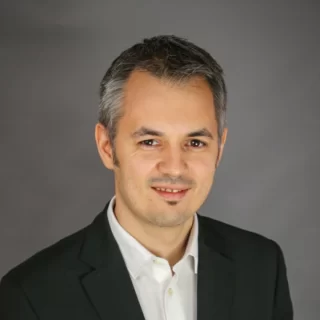The Kumanovo Agreement never happened. The Ahtisaari Plan from 2007 never happened. The declaration of independence of Kosovo in 2008 never happened. The Brussels Agreement from 2013 never happened. The new Brussels Agreement from 2023 never happened. The meeting in Ohrid, that same year, a month later, never happened. From 1999 to this year 2024, nothing has ever happened. The war is still ongoing. At least that is how it looks from Serbia’s point of view.
Let’s take, for example, last year’s armed incident in Banjska, Kosovo. An armed group from Serbia entered into the territory of Kosovo. Four people were killed. We know exactly who was leading the group from Serbia; we even have their confessions. Yet, no one was held accountable, neither for illegal possession of weapons nor for the four lives lost. How is this possible? It’s possible because the war is still ongoing. And in war, people die, don’t they?
Time is standing still in Serbia. The year 1999 seems to have been going on forever. If we unfortunately experienced a dramatic acceleration of history from 1991 to 1999, apparently nothing has happened since then. This blindness towards facts—take any facts you want, those related to politics or crime related facts—isn’t just a constant from the post-1999 period; it was the same before 1991 and in 1997/98 when the war in Kosovo began.
Another example: in 1990, we had the book “The Kosovo Knot: To Untie or to Cut it?” (authors: Srđa Popović, Dejan Janča, Tanja Petovar, Ivan Janković, Vesna Pešić, Nataša Kandić, Svetlana Slapšak). From 1990 to 1997, there was enough time to carefully read those 160-odd pages and develop a different “Serbian” policy for Kosovo based on the insights from that book. That never happened.
The authors of the book and the research, which aimed at establishing the facts about the situation in Kosovo, essentially “took apart” (“debunked” would be the right word) one by one the “myths”—here, “myth” refers to a fabricated story—of the “Serbian” but actually just the war-mongering policies at the time: from the expulsion of Serbs from Kosovo under pressure to Albanians mass-raping Serbian women in Kosovo.
Here are the facts: “Available criminal statistics show that Albanians as perpetrators of criminal acts against Serbs and Montenegrins are underrepresented in relation to their proportion in the population (4.1% of all reported acts against Serbs and Montenegrins are attributed to Albanian perpetrators)”; “Regarding the crime of rape… first, it was found that both Albanians and Serbs appeared as perpetrators of rape in Kosovo in percentages roughly matching their population proportions… and second, that Serbs committed this crime against Serbian women more frequently than Albanians” (pp. 25-26).
The conclusion follows: “It is clear that the theme of pressures was instrumentalized, in our opinion, for the purposes of (1) creating support for the implementation of repressive measures; (2) creating an atmosphere for limiting or abolishing Kosovo’s political autonomy; and (3) reinforcing an authoritarian regime in Serbia” (p. 26).
In fact, the authors began the book with a similar observation: “Both empirical research and official records are extremely scarce. Given the importance of the issue and the significant public attention it has attracted, we believe this paradox deserves its own evaluation. This scarcity of information, in our opinion, is due to the fact that the issue has been entirely left to politics, propaganda, and aggressive pressure groups. This initial assessment was confirmed by our subsequent findings” (p. 3).
The authors tried in vain, conducted research and gave proof, but their arguments were unable to overcome the “story” of Serbian martyrdom. Legal proceedings and statistics were unconvincing to the Serbian public. The imagination of Serbia’s citizens at the time had already been captured (or rather—imprisoned) by images from the “Martinović case” in 1985. The raped Serb—actually the head of the JNA Cultural Center in Gnjilane—embodied the suffering of “Serbs” in Kosovo. Mića Popović’s painting of the “crucified” Martinović and the “treacherous” Albanians under his “cross” displayed in a storefront in Knez Mihailova Street in Belgrade overshadowed the reasonable “little book” from 1990.
That’s how it was in 1990: reason had no chance against burning “national” passions. The truth was being hidden to start a war. That’s how it was after 1999 as well: the truth was being hidden to avoid leaving the war. For seven years, from 1990 to 1997, the truth stood before the residents of Serbia, but instead of acknowledging it, they were fixated on their “authoritarian regime.” For almost thirty-five years, from 1990 to 2024, the truth has been standing before the people of Serbia, but instead of facing it, they still focused on that same “authoritarian regime.”
And everything is obvious: twenty-five years ago, accepting the Kumanovo Agreement was, in fact, an acknowledgment of surrender. The readers can take a look at what was written in the agreement from June 3, 1999; it is short, and decide for themselves—is it a “military-technical” (as it is titled) agreement or a capitulation? Skeptical readers can also examine UN Resolution 1244 from June 10, 1999, and determine for themselves whether it is, once again, a confirmation of capitulation or a victory, as the agreement was interpreted in the defeated Serbia at the time.
Readers from my generation remember those years, 1997 and 1998. Serbia was seething with rebellious citizens. The opposition at the time won local elections in 1996 in cities across Serbia. Late 1996 and early 1997 were marked by massive protests in the streets of Belgrade, Niš, and other cities. Serbia’s residents fought for their electoral will to be recognized and realized. By the end of 1997 and into 1998, however, that entire opposition momentum was halted. The “Kosovo issue” had to be resolved.
In February 1999, in Rambouillet, there was an opportunity to reach an agreement and stop the war in Kosovo. The Serbian representatives went to the meeting with official instructions from the Parliament to accept nothing and make no agreements. We know what happened next. NATO’s operation. Capitulation in Kumanovo. Resolution 1244. And that resolution references the proposed agreement from Rambouillet.
Just as the 2008 Kosovo Constitution basically includes the entire 2007 Ahtisaari Plan, to which Serbia responded preventively with the preamble of its 2006 Constitution. That preamble is another example of denying facts and choosing lies over the truth. The same Ahtisaari Plan will return to Serbia in various versions of the Brussels Agreement (the one from 2013 and the one from 2023).
Finally, it will also be added as a condition in negotiations for European Union membership. For seventeen years, Serbia has rejected that plan, and for seventeen years, it keeps coming back regularly, with Serbia accepting one part of it after another each year against its will. Although it still officially rejects it, or rather, doesn’t mention it, as if it never existed.
Seventeen years, twenty-five years, thirty-five years… – the “Kosovo issue” from Serbia’s point of view remains unresolved. But in reality, everything has already happened: instead of untying the “Kosovo knot” as the authors suggested in 1990, Serbia decided to cut it: by abolishing autonomy and using armed force. This led to the outbreak of armed conflict in 1997/98. Which led to capitulation in 1999. Which led to the independence of Kosovo in 2008. Which led to the agreements with Kosovo as a neighboring state in 2013 and 2023. All of that happened. And it didn’t have to happen (especially the war and the war crimes) if the same “authoritarian regime” then and now, had not been (deliberately) blind towards the facts.
Dejan Ilić (1965, Zemun) is an editor at the publishing house Fabrika knjiga and a regular contributor to Peščanik. He graduated from the Faculty of Philology at the University of Belgrade, earned his MA in Gender and Culture Studies at the Central European University in Budapest, and completed his Ph.D. at the same university in the Gender Studies Department. Among others, he has published books such as “Transitional Justice and Literary Interpretation: The Serbian Example” (2011), “Two Faces of Patriotism” (2016), and “Serbia in Continuity” (2020).




